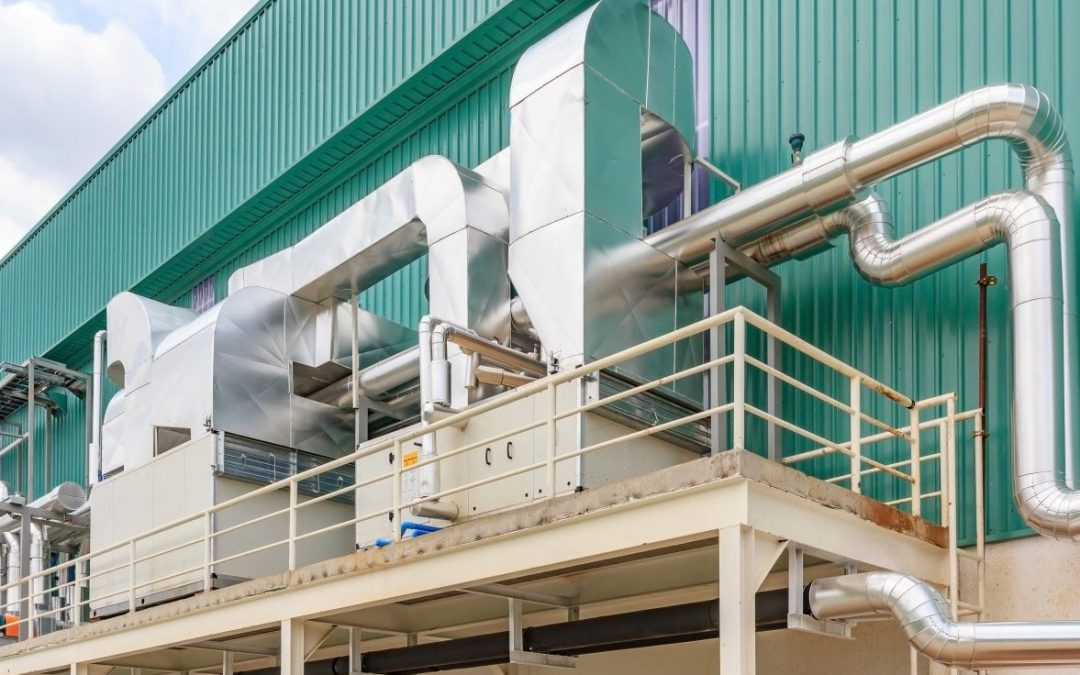System Capacity and Efficiency:
When choosing a chilled water air conditioning system, capacity and efficiency should be among your top priorities. Considering the building’s cooling demands, it is important to scale the system appropriately. This involves considering aspects like the space’s dimensions, occupancy levels, heat-generating equipment, and weather conditions.
Reducing comfort and increasing the likelihood of equipment failure, undersized systems may struggle to maintain suitable indoor temperatures. However, increased energy consumption and operational expenses could be the outcome of systems that are too large. Think about the system’s efficiency as much as its capacity. Reducing operational costs and environmental effect can be achieved through the use of energy-efficient chillers, pumps, and cooling towers. To maximize efficiency, search for systems that have received excellent ratings for energy efficiency and think about adding features like variable speed drives and energy recovery possibilities.
Water Quality and Treatment:
To avoid biological growth, corrosion, and scaling, as well as to guarantee dependable operation, water quality is of the utmost importance in chilled water air conditioning systems. Reduced efficiency, equipment damage, and expensive maintenance difficulties can result from poor water quality.
Assessing the water supply’s quality and implementing suitable water treatment techniques are requirements to building a chilled water system. Filtration, chemical treatment, and routine testing to track characteristics like pH, hardness, and microbiological content are all part of this process. In addition to preserving system components, proper water treatment aids in effective heat transmission, increases equipment longevity, and decreases operating costs and downtime.
System Design and Layout:
How well, how efficiently, and how easy it is to maintain the chilled water air conditioning system is heavily dependent on its design and structure. To maximize efficiency and performance, a well-designed system should think about things like pipe size, pump choice, where to put the air handling unit, and control strategies.
For even distribution of heat and water throughout the structure, well-planned plumbing is essential. To reduce pressure loss and energy wastage, think about things like pipe size, insulation, and path. In order to make the most efficient use of available space, reduce pipe lengths, and make maintenance easier, it is important to strategically place chillers, cooling towers, and air handling equipment. To keep an eye on how things are running and make adjustments as needed in real time, you might want to think about including control systems and sensors.
Redundancy and Backup:
Because of the severity of the consequences that can result from system disruption, ensuring dependability is of the utmost importance for critical facilities. The chilled water air conditioning system can be designed with backup and redundancy features to reduce the likelihood of system failures and keep building operations running smoothly.
Think about setting up backup chillers, pumps, and cooling towers in case anything goes wrong or needs maintenance. As an added precaution, you should look at automated switchover systems and multiple piping arrangements so that important parts of the building can continue to get cooling without interruption. Prepare for the unexpected by routinely testing backup systems and creating emergency plans. You may rest easy knowing that your activities will continue uninterrupted in the face of unexpected obstacles if you invest in redundancy up front.
Future Expansion and Flexibility:
When choosing a chilled water air conditioning system, it’s important to think about the building’s potential for growth and expansion. In order to adapt to fluctuating cooling needs, occupancy levels, and building usage, choose for a system that can be easily scaled up or down.
Choose equipment designs that are flexible so that modifications and expansions may be done easily without causing major delays to building operations. To make the system more resilient to changes in industry norms and standards, it is advisable to choose components and technologies that are flexible enough to adapt. Also, think about how the building’s layout or use could vary over time, as this could affect how the cooling load is distributed and how much power the system needs. Make sure the system can handle future updates and changes by designing it to be flexible.
Remote Monitoring and Control:
Building operators may now remotely monitor system performance, alter settings, and troubleshoot difficulties thanks to the implementation of remote monitoring and control capabilities. If you have a cloud-based monitoring platform or a building automation system (BAS), you can access data and analytics in real-time from any location with an internet connection.
Through remote monitoring, system operation may be optimized in response to changing conditions, equipment defects can be detected early, and proactive maintenance can be carried out. Reduced downtime and increased efficiency are the results of operators’ ability to remotely operate the chilled water system in response to energy-saving possibilities, occupant comfort concerns, or equipment problems.
Resilience and Disaster Preparedness:
While planning and managing chilled water air conditioning systems, it is important to keep resilience and disaster preparedness in mind, especially in areas that are vulnerable to severe weather or natural catastrophes. Create backup plans and emergency protocols to keep cooling running in the event of a power outage, broken equipment, or other disaster.
To keep essential system functions running during long power outages, look at backup power-generating solutions like diesel generators or battery storage systems. To keep people, property, and operations safe and reduce downtime, it’s a good idea to set up backup cooling systems, redundant controls, and additional heating, ventilation and air conditioning units.

